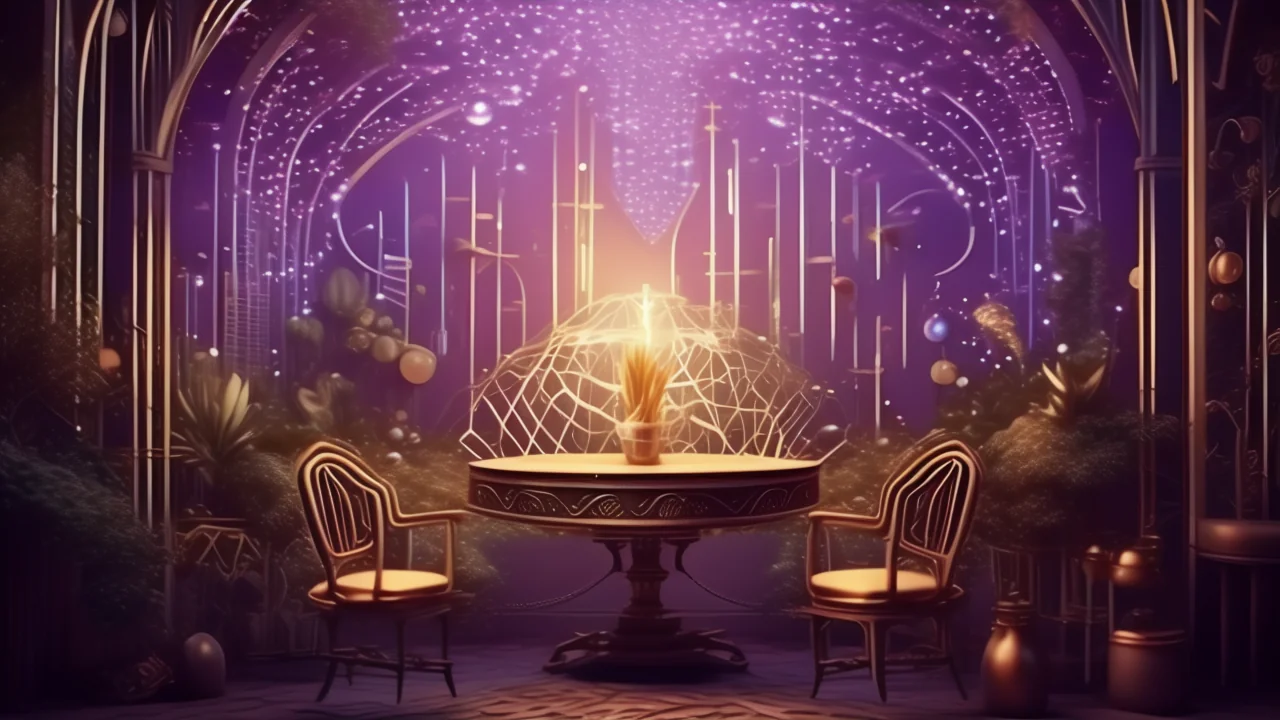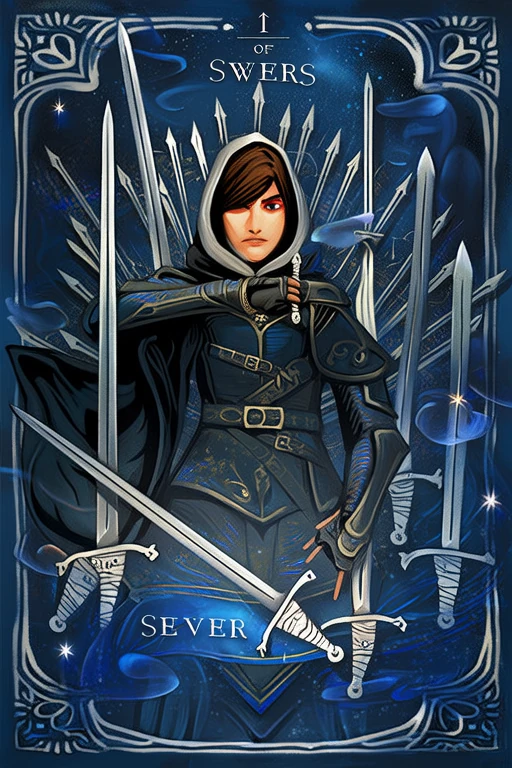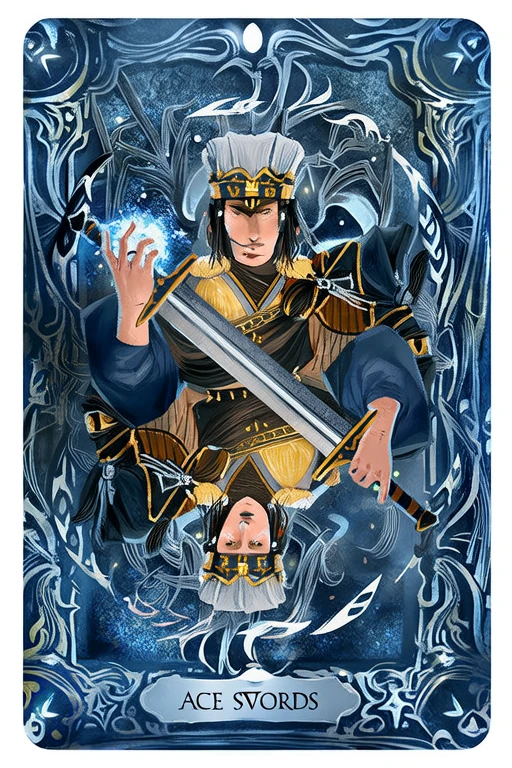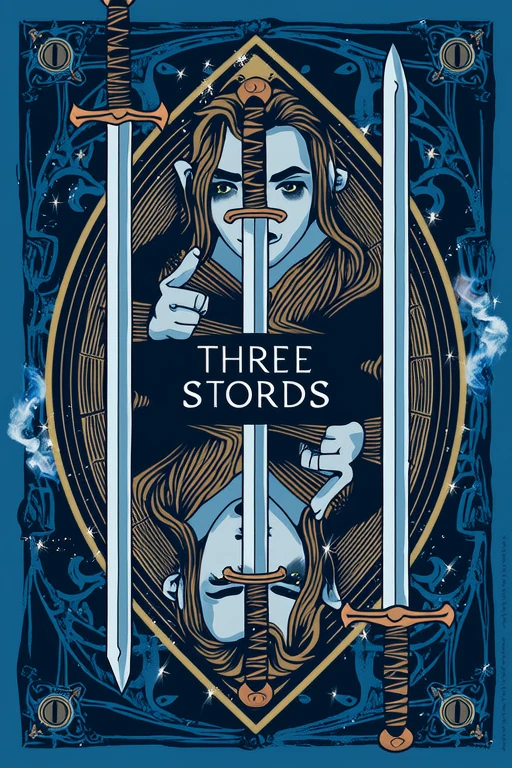
Seven of Swords
Discover the deep meaning of Seven of Swords with our free AI-powered tarot interpretation. Get instant, accurate readings based on advanced tarot knowledge.

Keywords
Upright Meaning
Deception, trickery, tactics
Reversed Meaning
Imposter syndrome, self-deceit, keeping secrets
Full Interpretation
The Seven of Swords represents deception, trickery, and the need to be strategic.
In-Depth Analysis
📜 Historical Background
The Seven of Swords, known as '宝剑七' in Chinese, holds a rich and layered history within the tarot tradition. As part of the Minor Arcana in the Tarot deck, the card belongs to the suit of Swords, which traditionally represents intellect, conflict, and the element of air. Its origins trace back to early 15th-century Europe, where tarot cards were first used as playing cards in games like Tarocchi in Italy and Tarot in France. The symbolic imagery of the Seven of Swords began to take shape in the 16th and 17th centuries with the emergence of the Marseilles Tarot, one of the earliest standardized decks. In this version, the card was depicted as five swords laid out in a row, with two additional swords behind them—this simple yet evocative design hinted at themes of deception, stealth, and betrayal.
As the tarot evolved from a game into a tool for divination and spiritual insight, the meaning of the Seven of Swords became more nuanced. In the 19th century, the Hermetic Order of the Golden Dawn expanded the esoteric meanings of the cards, assigning the Seven of Swords to the astrological sign of Gemini, highlighting its connection to duality, communication, and mental agility. The Rider-Waite-Smith deck, published in 1909 and illustrated by Pamela Colman Smith under the guidance of A.E. Waite, introduced a more narrative and symbolic depiction: a man stealthily carrying away five swords while two remain embedded in the ground. This image emphasized the themes of trickery, deceit, and hidden motives that are central to the card’s interpretation today.
Throughout history, the Seven of Swords has been associated with myths and legends involving tricksters, thieves, and those who operate in the shadows. In some interpretations, the card is linked to figures like Loki from Norse mythology or Hermes from Greek mythology—both known for their cunning and ability to manipulate situations to their advantage. In a broader cultural context, the card has been interpreted differently across regions: in some European traditions, it symbolizes betrayal or loss, while in others, it is seen as a warning to be cautious of one’s surroundings and not to trust too easily.
Over time, various tarot decks have offered unique interpretations of the Seven of Swords. The Thoth Tarot, designed by Aleister Crowley and Lady Frieda Harris, renames the card as 'Futility' and assigns it to the astrological sign of Sagittarius, shifting the focus toward disillusionment and wasted effort. Other modern decks may depict the card through the lens of modern betrayal—such as cybercrime, misinformation, or emotional manipulation—showing how its core themes remain relevant across centuries. This evolution underscores the card’s enduring significance in both historical and contemporary tarot practice.
Symbolism & Imagery
The Seven of Swords is rich in symbolic meaning, with each element of its imagery contributing to its overall interpretation. In the Rider-Waite-Smith version, the card features a man stealthily walking away with five swords while two remain standing in the ground behind him. The man’s posture suggests both urgency and deceit—he is not merely taking the swords, but doing so under the cover of secrecy. This visual metaphor encapsulates the primary themes of the card: deception, betrayal, and the consequences of dishonesty.
Each sword in the image represents a thought, idea, or truth, and the act of removing them from their original place suggests a distortion or misappropriation of these truths. The five swords the man carries may symbolize incomplete knowledge or the selective use of information, while the two remaining swords hint at what has been left behind—perhaps overlooked truths or the potential for future conflict. The barren landscape and distant hills in the background suggest a lack of emotional or spiritual grounding, reinforcing the idea that deception often leads to isolation or emotional emptiness.
Color symbolism also plays a role in interpreting the Seven of Swords. The muted tones and lack of vibrant color in many traditional depictions reflect the card’s themes of confusion, disillusionment, and emotional coldness. The sky may appear overcast or gray, emphasizing the mental fog or uncertainty that often accompanies deceit. In some modern decks, the use of darker or sharper colors may amplify the sense of danger or betrayal.
Numerologically, the number seven is associated with introspection, spiritual awakening, and inner wisdom. However, in the context of the Seven of Swords, this introspection is complicated by the presence of dishonesty or self-deception. The number may also point to the idea of a turning point—where the truth must eventually come to light, forcing the individual to confront the consequences of their actions.
Culturally, interpretations of the Seven of Swords vary. In some traditions, it is seen as a warning to be cautious of others, while in others, it serves as a reminder to examine one’s own motivations and behaviors. In Eastern interpretations, the card may be linked to the idea of karma—where dishonest actions eventually lead to negative consequences.
In upright position, the Seven of Swords typically signifies deceit, betrayal, or hidden motives. It may indicate that someone is not being truthful or that important information is being withheld. When reversed, the card can suggest a realization of past dishonesty, the need to confront the truth, or the beginning of a healing process after betrayal. It may also point to self-deception or the need to reassess one’s own actions.
The Seven of Swords connects with other cards in the tarot through thematic resonance. It shares themes of deception and hidden truths with the Devil and the Five of Cups, while its emphasis on mental clarity and consequence aligns with the Justice and Judgment cards. In combination with other Swords cards, it often amplifies themes of conflict, confusion, or the need for honest communication.
Psychological Insights
From a psychological perspective, the Seven of Swords resonates with the shadow self—the part of the psyche that houses repressed thoughts, desires, and behaviors. In Jungian psychology, the card can be associated with the archetype of the Trickster, a figure that challenges norms, blurs boundaries, and forces individuals to confront uncomfortable truths. This archetype is not inherently evil but serves as a catalyst for growth by exposing deception, whether external or self-imposed. The Seven of Swords invites introspection into areas of life where one may be avoiding responsibility, distorting reality, or engaging in self-deception.
In modern life, the Seven of Swords serves as a cautionary symbol, particularly in contexts involving trust, communication, and decision-making. It may appear in readings when someone is being misled, whether by others or by their own justifications. This card encourages individuals to examine their motivations, question the authenticity of information, and consider the long-term consequences of dishonesty. It is especially relevant in today’s world, where misinformation, manipulation, and digital deception are increasingly common.
For personal growth, the Seven of Swords prompts a deep look into one’s integrity and truthfulness. It challenges individuals to confront parts of themselves that may be operating in secrecy or avoiding accountability. This process, while uncomfortable, is essential for developing self-awareness and emotional maturity. By acknowledging and integrating the shadow aspects of the self, individuals can move toward greater authenticity and clarity.
In therapeutic and counseling settings, the Seven of Swords can be a powerful tool for uncovering hidden issues in a client’s life. It may indicate unresolved guilt, dishonesty in relationships, or the need to address past betrayals. Counselors and therapists may use the card to encourage clients to explore their own behaviors, examine patterns of deception, and work toward emotional healing.
Modern spiritual practices also incorporate the Seven of Swords as a symbol of karmic lessons and spiritual awakening. It serves as a reminder that truth cannot be avoided indefinitely and that personal growth often comes through confronting uncomfortable realities. Meditation on this card can help individuals cultivate honesty, discernment, and the courage to face the consequences of their actions. Whether used in tarot readings, journaling, or guided reflection, the Seven of Swords remains a potent symbol of self-awareness and transformation in contemporary spiritual journeys.
Correspondences
The Seven of Swords is deeply connected to astrological and elemental influences that enhance its symbolic meaning. In the esoteric system of the Golden Dawn, the card is associated with the astrological sign Gemini, ruled by Mercury. This planetary influence emphasizes the card’s themes of communication, duality, and mental agility. Mercury’s energy brings a focus on information, intellect, and the potential for miscommunication or manipulation—key aspects of the Seven of Swords’ interpretation.
Gemstones and crystals that resonate with the energy of the Seven of Swords include black tourmaline, known for its protective properties, and fluorite, which enhances mental clarity and discernment. Obsidian is another powerful stone for this card, aiding in the revelation of hidden truths and the release of self-deception. Essential oils such as sage, frankincense, and myrrh can be used in meditation or ritual to support truth-seeking and spiritual clarity.
In terms of herbal correspondences, rue is often associated with protection against deceit, while angelica root is used for truth revelation and psychic protection. Mugwort, commonly used in dream work, can aid in uncovering subconscious deceptions or hidden motives when working with this card.
The Seven of Swords aligns with the element of air, reflecting its connection to the mind, communication, and intellectual processes. As part of the Swords suit, it embodies the sharpness and clarity of thought, but also the potential for mental conflict or confusion. The card is often linked to the season of autumn, a time of transition and harvest, where illusions are stripped away and truth becomes more apparent.
Energetically, the Seven of Swords resonates with the throat chakra (Vishuddha), which governs communication, truth, and self-expression. Balancing this chakra can help individuals speak and hear the truth more clearly, reducing the influence of deception in their lives.
Numerologically, the number seven is linked to introspection, spiritual awakening, and the pursuit of deeper understanding. In the context of the Seven of Swords, this number highlights the need for inner reflection and the uncovering of hidden truths. It also suggests a karmic lesson or turning point where honesty and integrity become essential for personal growth.
❓ Frequently Asked Questions
The Seven of Swords is a card that often raises questions due to its complex and sometimes unsettling themes. One of the most common inquiries is: 'Does the Seven of Swords always mean betrayal?' While the card is commonly associated with deception or betrayal, it does not always indicate malicious intent. It can also suggest self-deception, dishonesty, or the need to reevaluate a situation where information may be incomplete or misleading.
Beginners often misinterpret the Seven of Swords as a purely negative card, but it can also serve as a wake-up call. It encourages individuals to examine their own actions and motivations, making it a valuable tool for personal growth. Clarifying this nuance is essential for accurate readings.
Professional tarot readers use specific techniques when interpreting the Seven of Swords in a spread. In a three-card reading, its presence may indicate a past betrayal, a current deception, or a future warning. In more complex spreads like the Celtic Cross, the card’s position can reveal whether the deception is internal or external, and whether the querent is the deceiver or the deceived.
When the Seven of Swords appears alongside other cards, its meaning can shift. For example, paired with The Lovers, it may suggest dishonesty in a relationship. With Justice, it can indicate a need for truth to come to light. When combined with The High Priestess, it may point to hidden knowledge or intuitive warnings that need to be acknowledged.
Interpreting the Seven of Swords in different contexts requires sensitivity to the question and surrounding cards. In career readings, it might warn of dishonesty in the workplace or unreliable colleagues. In love readings, it could suggest infidelity or emotional dishonesty. In health readings, it may indicate self-deception about one’s well-being or the need to seek a second opinion.
Ultimately, the Seven of Swords is a card that demands honesty—both with oneself and with others. It serves as a reminder that truth, even when uncomfortable, is essential for growth and clarity. Readers should approach this card with an open mind and a willingness to explore the deeper layers of a situation.



